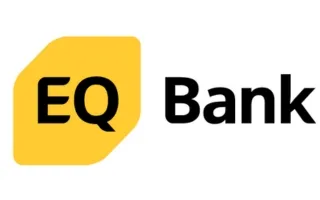 EQ Bank GIC
EQ Bank GIC
Guaranteed investment certificates (GICs) are low-risk investments that provide a guaranteed return on the money you deposit. Tax-free savings accounts (TFSAs) are accounts that can hold many different kinds of investments, including cash, mutual funds, stocks and bonds.
So should you invest in a GIC, open a TFSA or both? Keep reading for a GIC vs TFSA side-by-side comparison.
 EQ Bank GIC
EQ Bank GIC
What is a GIC?
A GIC is a low-risk investment that pays interest on the money you deposit. You agree to invest your money with a financial institution for a specified period of time, and in return you’re paid a fixed rate of interest and get your principal back when the term ends.
Terms range from 30 days to 10 years, and GICs are useful to help you reach short-term savings goals. They generally come with fixed interest rates, but market-linked GICs with variable rates are also available.
Traditional GICs are non-redeemable, which means you’ll need to pay a penalty if you want to access your money before the term ends. If you’d like the flexibility of being able to make an early withdrawal, you could opt for a cashable or redeemable GIC — but you’ll need to settle for a lower interest rate.
What is a TFSA?
A TFSA is a registered savings account that does exactly what it says on the tin — allows you to build your savings tax-free. But rather than just holding cash, a TFSA can be used to hold stocks, ETFs, bonds, mutual funds and a range of other investments. Best of all, you don’t need to pay income tax on any interest or capital gains earned from investments held in your TFSA.
TFSAs are available through banks, credit unions, trust companies and insurance companies. You’ll need to be 18 years or older and have a valid SIN to open an account, and there’s a limit to how much you can contribute to your account each year — $7,000 as of 2024, but any unused contribution room can be carried forward to the following year.
GIC vs TFSA: What’s the difference?
While a GIC is a type of investment, a TFSA is an account you use to hold investments — including GICs. So while a GIC is a single investment, you can use a TFSA to gain exposure to a wide range of investments.
There are a few other key differences between GICs and TFSAs, so let’s see how they compare across a few key categories.
GIC vs TFSA: Which offers better returns?
A TFSA offers the potential for better returns, but returns aren’t guaranteed.
GICs are safe investments that provide steady returns — as of August 2024, one year GIC rates of around 4% to 5% are available — but they generally don’t have the same potential for large growth provided by other TFSA-eligible investments like stocks, ETFs and mutual funds. That said, market-linked GICs may be able to offer better returns than traditional GICs.
The benefit of a TFSA is that it lets you create a diversified portfolio of investments, spreading your risk around. And you won’t pay tax on the income you earn from the investments you hold in a TFSA, helping you build your balance faster.
GIC vs TFSA: Which is more flexible?
TFSAs offer much more flexibility than GICs. The money you put in a TFSA can be held in different types of investments, including stocks, ETFs, mutual funds, bonds, cash and GICs. You can also take money out whenever you want if it’s held in cash.
But the annual contribution limit reduces the flexibility of TFSAs, as you’ll be hit with a fee if you exceed your limit. GICs, on the other hand, don’t have maximum investment limits.
If you have a non-redeemable GIC, you’ll typically have to pay a fee if you make a withdrawal before maturity. Cashable GICs will let you take your money out at any time without a fee. The only downside is that they typically offer lower interest rates than non-redeemable GICs.
Pros and cons of GICs
Pros
- Low risk. GICs offer a guaranteed return of your principal, with interest paid out at either a fixed or variable rate.
- Easy to manage. Once you put money into a GIC, you don’t have to do anything with it until your term is up.
- Steady return. If you choose a fixed-rate GIC, you’ll get a reliable and predictable return and avoid market fluctuations.
- No fees. You won’t pay any fees unless you cash in a non-redeemable GIC early (in which case you’ll be charged a penalty).
- Low minimum investment. GICs can be opened with investments as low as $100.
- Insurance is provided. Deposits up to $100,000 are insured by the Canada Deposit Insurance Corporation (CDIC) — provided the GIC is offered by a CDIC member.
Cons
- Less flexible. Non-redeemable GICs will typically charge a penalty if you have to access your funds before the term ends.
- Low rate of return. Other types of investments offer the potential for higher returns, and a GIC investment may not be able to keep up with inflation.
- Tax implications. Unless your money is in a registered account like a TFSA, RRSP or RESP, you will have to pay taxes on any interest you earn.
Pros and cons of TFSAs
Pros
- Diversifies your investments. TFSAs allow you to hold a combination of investments, including stocks, bonds, mutual funds, cash and GICs.
- Higher returns. If your TFSA portfolio is well-balanced, you should be able to get better returns while still managing your risk.
- Gains are tax-free. Any interest and investment income you earn from your TFSA holdings won’t be taxed.
- Provide more flexibility. You can take money out of your TFSA at any time if it is held in cash.
Cons
- Holdings need to be managed. It takes time to manage the spread of investments you might hold in your TFSA.
- Contribution room is restricted. You’ll only be able to contribute $7,000 per year to your account.
- Penalty for over-contribution. If you exceed the maximum allowable contribution, a 1% penalty applies to the excess amount.
Bottom line: Should I invest in a GIC or a TFSA?
Ultimately, both GICs and TFSAs can come in handy for Canadians who want to grow their savings.
A TFSA is an extremely useful tool that lets you build tax-free savings for short- and long-term financial goals. It allows you to create a diversified portfolio of investments, combining low-risk assets with higher-risk investments to help build your wealth.
GICs offer a safe and secure way to earn interest income, either inside or outside of registered accounts. And if you hold your GICs in a TFSA, you won’t have to pay tax on the interest you earn.
Just be sure to consider your risk tolerance, investment goals and time frame before deciding on the right products and accounts for your needs.
Frequently asked questions: GIC vs TFSA
More guides on Finder
-
EQ Bank GIC rates
Your guide to current EQ Bank GIC rates for registered and non-registered accounts.
-
What is a GIC laddering strategy?
GIC laddering lets you enjoy guaranteed returns without locking in your funds for the long-term.
-
Simplii GIC review
Is a Simplii GIC right for you? Explore Simplii GIC rates, terms, advantages and drawbacks in our review.
-
TD GIC review
Looking for a low-risk investment? Get competitive rates and a guaranteed return with a TD GIC.
-
Scotiabank GIC review
A Scotiabank GIC offers a low-risk way to save—especially if you already have a premium Scotia account.
-
GIC vs bonds: Which is better?
Compare GICs and bonds to learn which investment is the best fit for your financial situation.
-
RBC GIC review
We explore RBC GIC rates and break down the pros & cons of this low-risk investment.
-
Mutual fund vs GIC: Which investment is better?
Compare GICs and mutual funds to find out which investment is the best fit for you.
-
RRSP GIC guide
Looking for a low-risk, tax-free way to grow your money for retirement? Find out how an RRSP GIC works.
